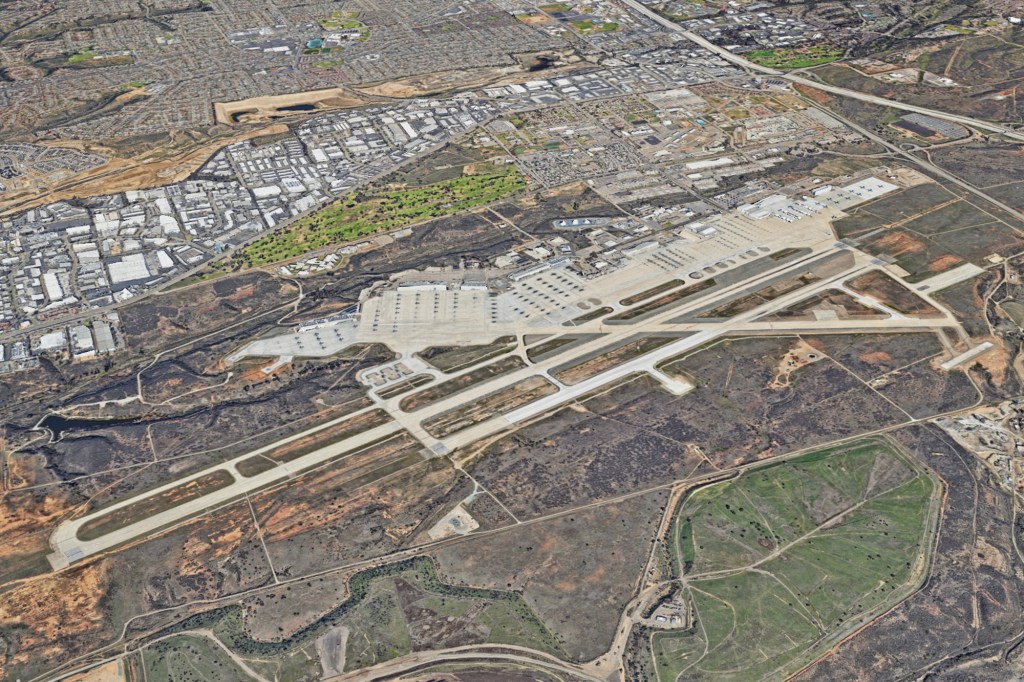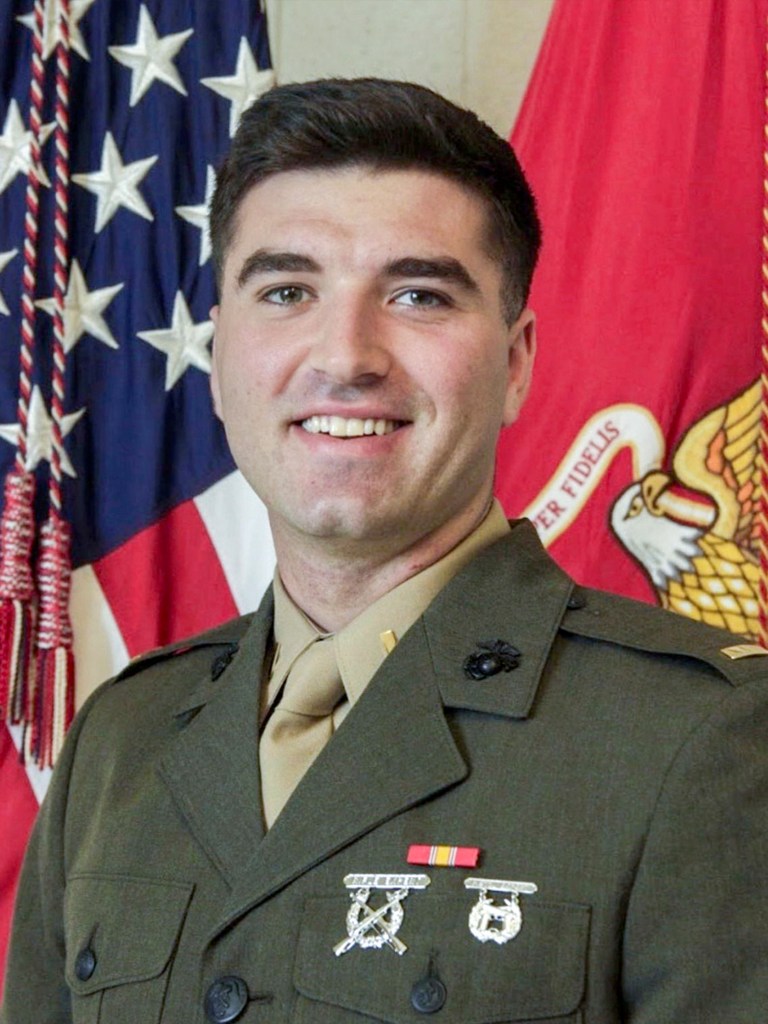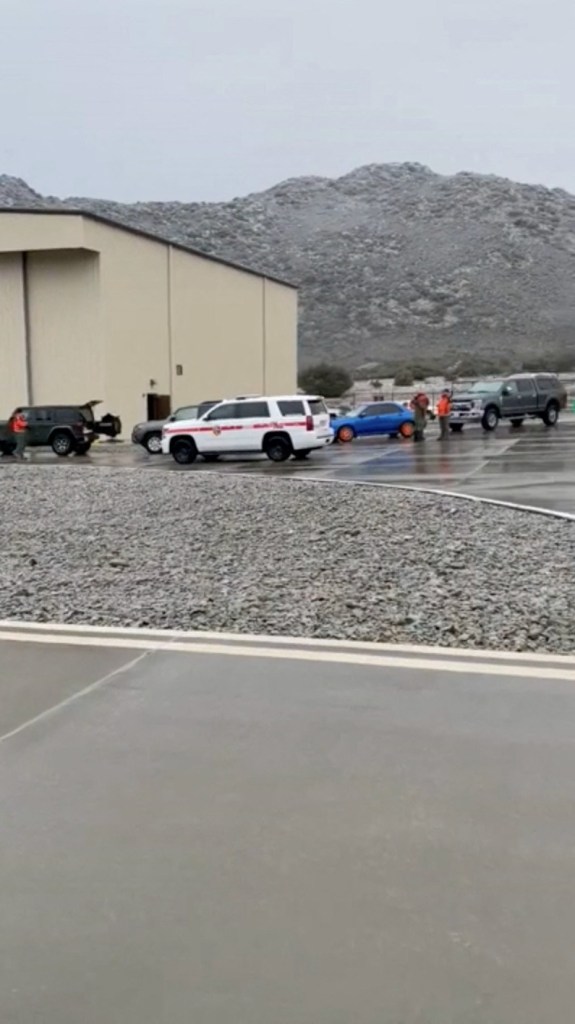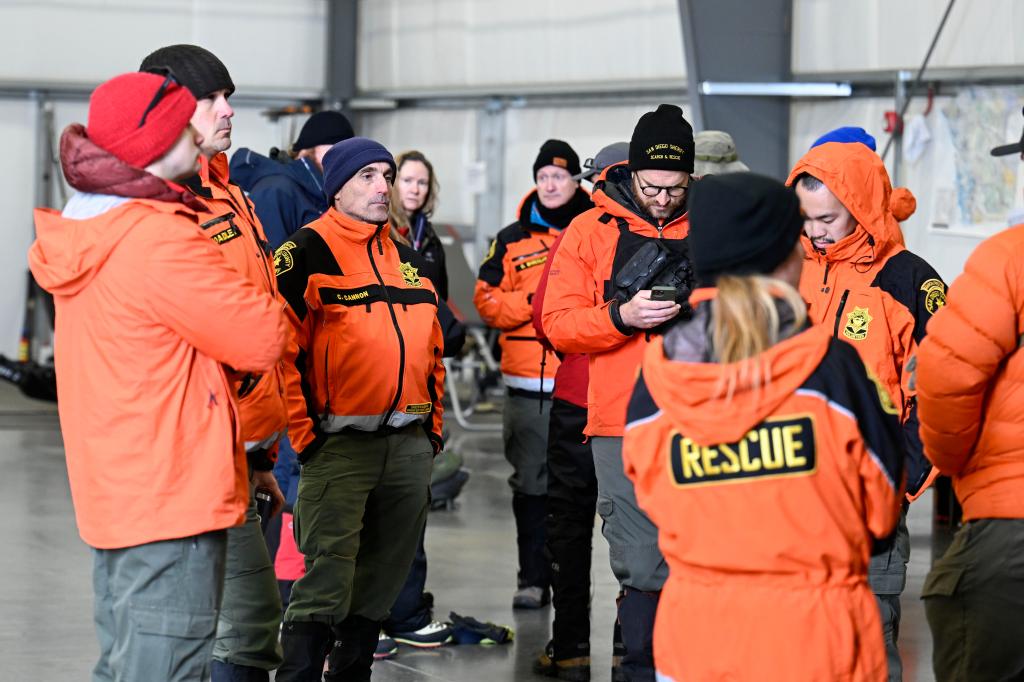All 5 Marines killed in California helicopter crash ID’d
The five US Marines who died after their military helicopter went down in a mountainous terrain in San Diego earlier this week have been identified.
Military officials identified the men as Lance Cpl. Donovan Davis, 21; Sgt. Alec Langen, 23; Capt. Benjamin Moulton, 27; Capt. Jack Casey, 26, and Capt. Miguel Nava, 28.
The crew members on board were all killed when their CH-53E Super Stallion ran into a storm and went down about 45 miles east of San Diego on Tuesday.
“Our top priority now is supporting the families of our fallen heroes, and we ask for your respect and understanding as they grieve,” Lt. Col. Nicholas J. Harvey, commanding officer of HMH-361, said Friday.
“The Flying Tigers family stands strong and includes the friends and community who have supported our squadron during this challenging time.”
The men were assigned to Air Station Miramar’s Marine Heavy Helicopter Squadron 361, Marine Aircraft Group 16, 3rd Marine Aircraft Wing.
All five men had decorated careers, including several National Defense Service Medals and Global War on Terrorism Service Medals among the group, US Marine Corps officials said on Friday.
Moulton and Casey had been promoted to the rank of captain last year.
Torrential weather more than likely contributed to the helicopter crash that took the lives of five US Marines who were headed back to their base camp in California, aviation experts told The Post.
Kodey Bogart, an aviation expert and former US Army Black Hawk pilot, said the crew would have been provided a specific plan cleared with the internal flight operation department of the Marine Corps before they took off Tuesday night from Creech Air Force Base, just northwest of Las Vegas.
The crew from the 3rd Marine Aircraft Wing were expected back at the Miramar station in San Diego later that night.
The “Pineapple Express” storm that brought unprecedented rainfall and snow throughout California made flight conditions unstable and dangerous for the past few days, said several aviation experts who spoke to The Post.
“There are several scenarios — first, they had a flight plan, but they thought they would be able to get back and be on the ground before the inclement weather,” Bogart said. “They had a choice not to move forward because bad weather moves really fast.
“If they were already up in the air, they had to make a sudden decision to land because it was getting bad real quick. The third option was they decided to climb above the bad weather, but something went wrong.”
The helicopter was reported missing in an area north of Interstate 8 and Kitchen Creek Road, located southeast of Pine Valley.
The helicopter debris was discovered near the Cleveland National Forest, which includes rocky terrain and San Diego County’s second-highest mountain, Cuyamaca Peak, which reaches 6,512 feet.
Cal Fire’s spokesperson Mike Cornette told The Post the area where the helicopter debris was found is in very steep terrain.
“They encountered very heavy snow,” Cornette said.
Cornette said the last known contact with the Super Stallion was at about 11:30 p.m. Tuesday because there was a “ping” reported by their dispatch.
On Thursday, family members of Sgt. Alec Langren identified the 23-year old was one of Marines on board.
Officials with the Marines are still investigating the cause of the crash.
Langren’s mother, Caryn, told local NBC 7 her son followed his father’s footsteps and was a proud Marine. The young sergeant was married just last month.
“Ever since he was three, he was like, ‘I want to do what daddy did,’” his father, Steven Langen, told ABC15. “I did the same thing. I was in the same helicopter, same everything from ’86 to ’95.”
Since the CH-53E Super Stallion wreckage was found 45 miles east of San Diego, it would not have been within the military airspace, Bogart said.
The Marines’ flight reports should’ve indicated when the aircraft was expected to land, Bogart said. When the expected aircraft doesn’t land within 10 to 20 minutes of the expected arrival time, it is the protocol to alert local agencies, she said.
Another aviation expert, Michael R. Henderson, said if the Super Stallion was not in military airspace when it crashed, it’s more than likely the aircraft was being tracked by SoCal TRACON, which provides all radar air traffic control in Southern California.
SoCal TRACON covers the airspace 20 miles north of Burbank to the US/Mexican border and from San Bernardino to the Catalina Islands.
Henderson also said since visibility was likely bad the night the Marines’ helicopter approached San Diego, it probably would’ve been impossible to see less than three miles. Pilots are required to follow an Instrument Flight Rules plan when visibility is poor, he said.
“There’s a high likelihood that they were in communication with the military or SoCal TRACON right before they went down,” Henderson told The Post. “Sadly, they either did not follow the designated flight plan, or they had an engine problem or another problem of some sort happened that made them fall off that flight plan.
“Once you get up the mountains, there is something called a ‘down suck’ or huge pressure that sucks you down into the canyon. That kind of helicopter is big and powerful, but it’s not quick to recover.”
The CH-53E Super Stallion — the largest and heaviest helicopter used in the U.S. military — has been involved in several deadly crashes, according to USA Today.
The accident rate of the Super Stallion is more than double that of other Marine aircraft, Rich Martindell, a former aircraft accident investigator in the Air Force, told the publication.
The CH-53 had an average of 5.96 accidents per 100,000 hours of flight, while other helicopters had an average of 2.26 per 100,000 hours, he said.
While Cal Fire got the “ping” at 11:30 p.m. Tuesday about the missing chopper, rescue crews went out to the scene at 2:20 a.m. Wednesday, Cornette told The Post.
Bogart said it’s more than likely that rescue crews didn’t go out right away because of the inclement weather.
“They more than likely went down in mountainous terrain and it was probably an exceptional challenge and a safety risk for those emergency personnel to go out there,” she said.
With Post wires































